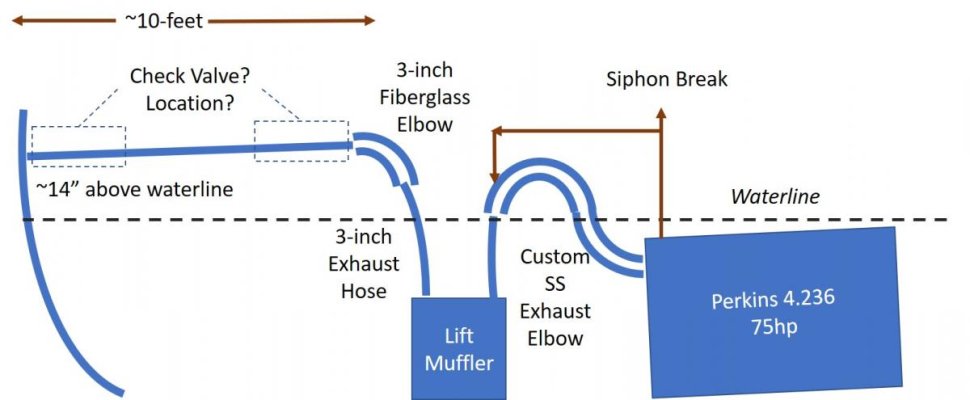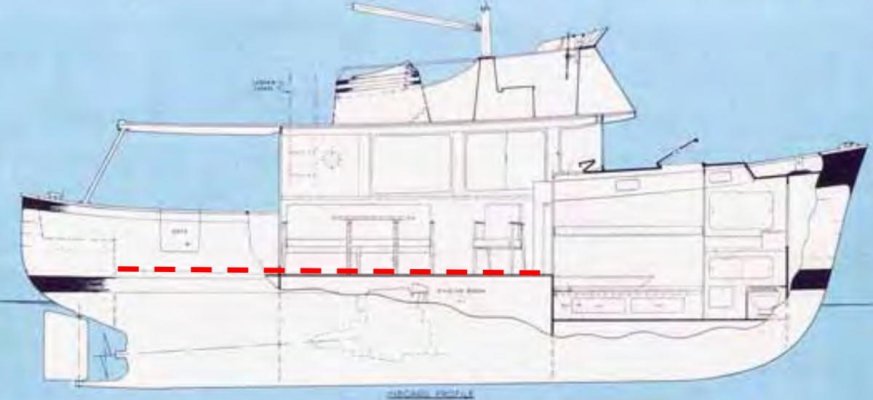mvweebles
Guru
- Joined
- Mar 21, 2019
- Messages
- 7,215
- Location
- United States
- Vessel Name
- Weebles
- Vessel Make
- 1970 Willard 36 Trawler
I am refitting my Willard 36 for an extended cruise from California to Florida. I've had her for 20+ years. Wm Garden designed her low in the water which is great for many things......except it does confound the exhaust system a bit. I've never had any issues, but want to take the opportunity to improve her if possible.
QUESTIONS:
1. Anyone have experience with Centek inline back-flow preventers? I realize its functionally the same as a rubber flap on the flange where the exhaust exits the boat, but maybe something better?
2. Assuming the Centek check-valve has merits, where should it be installed - as close to the engine as possible, or near the hull exit? My thinking is to have it as close to the engine as possible, but maybe not.
See attached diagram.
Engine is out of the boat, so I have some flexibility - general comments are welcomed too.
Thanks in advance - Peter

QUESTIONS:
1. Anyone have experience with Centek inline back-flow preventers? I realize its functionally the same as a rubber flap on the flange where the exhaust exits the boat, but maybe something better?
2. Assuming the Centek check-valve has merits, where should it be installed - as close to the engine as possible, or near the hull exit? My thinking is to have it as close to the engine as possible, but maybe not.
See attached diagram.
Engine is out of the boat, so I have some flexibility - general comments are welcomed too.
Thanks in advance - Peter




